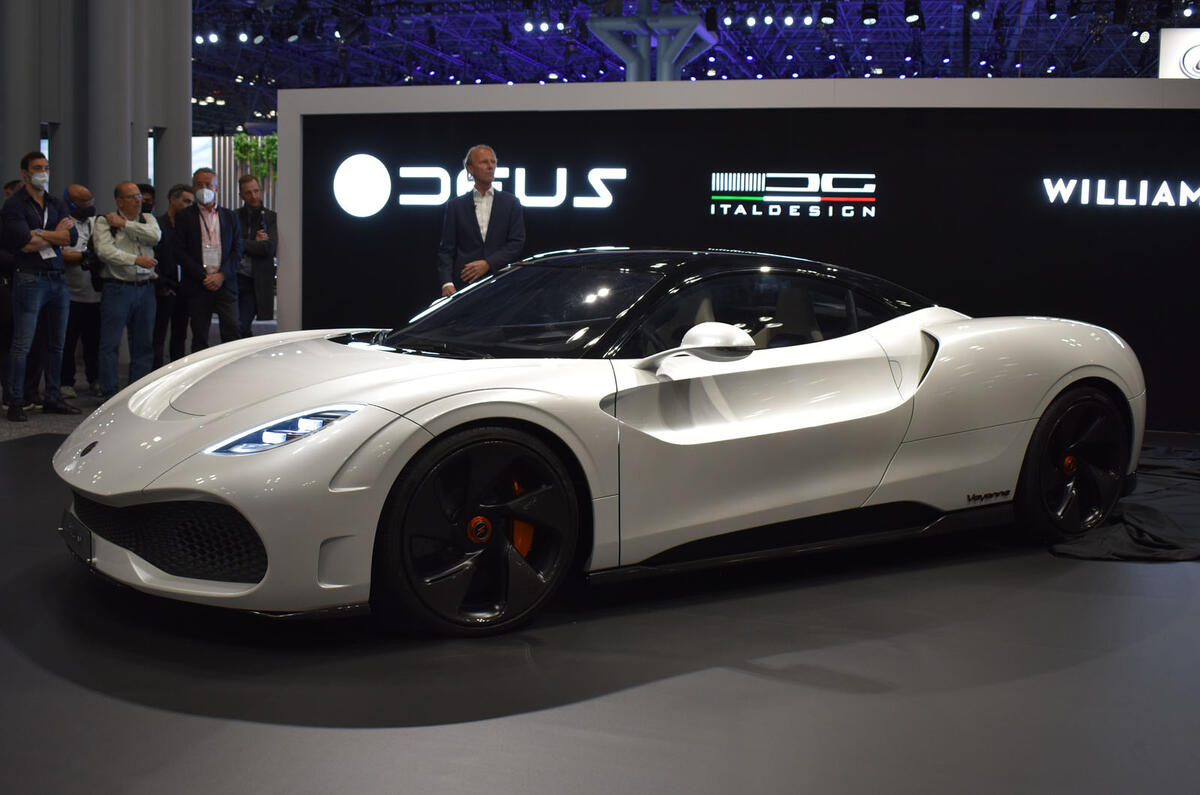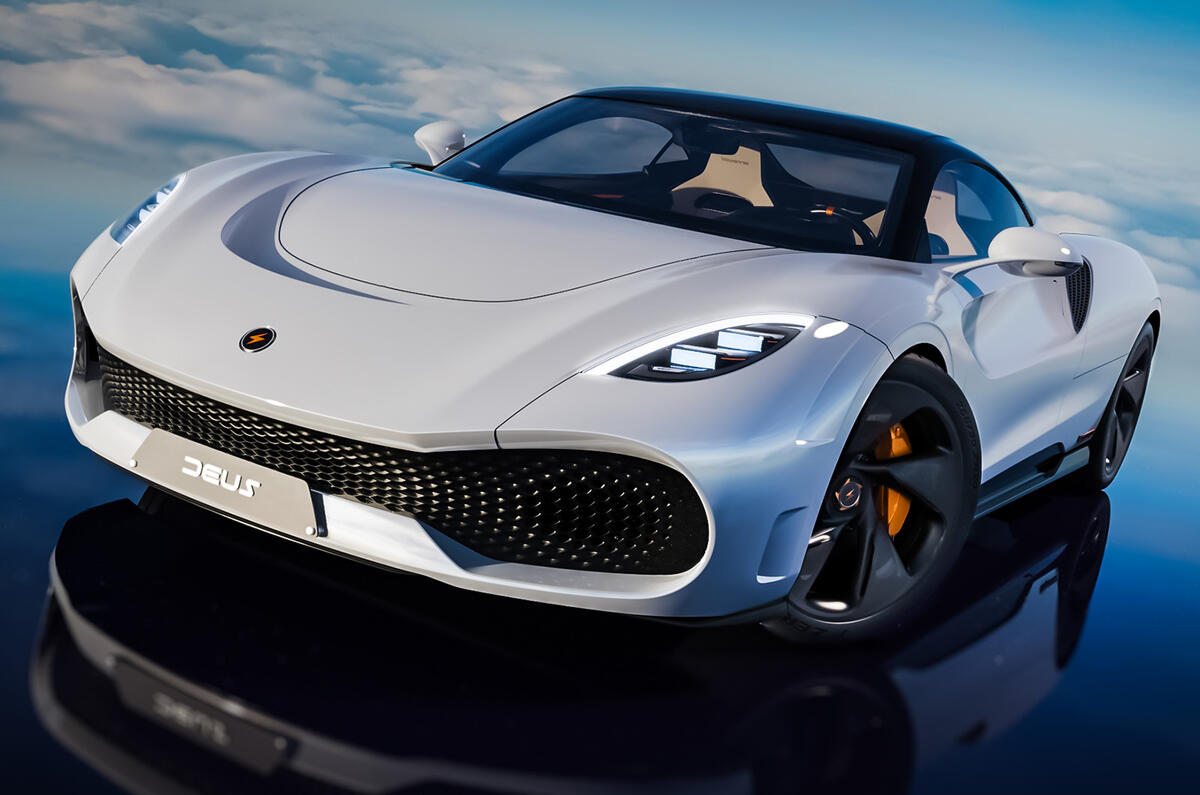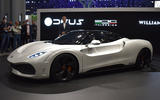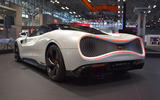New Austrian car manufacturer Deus has unveiled an all-electric hypercar at the New York motor show that looks set to become one of the most powerful cars on sale.
The Vayanne – named after Vienna, Deus’ home city – is being developed in partnership with Italdesign and Williams Advanced Engineering (WAE). Speaking to Autocar in New York; Deus’s head of design Adrian-Filip Butuca said: “The collaboration means we are delivering a safe, reliable and feasible product that will make it to the market. That is the number one priority for us. And on a personal level, they are great people to work with.”
The first cars are expected to be delivered from Italdesign’s Turin factory in 2025.
Computer simulations predict that the Vayanne's twin-motor, four-wheel-drive powertrain will produce more than 2169bhp and 1475lb ft of torque.
If accurate, it would mean the 4WD model is significantly more powerful than the 1876bhp Pininfarina Battista, 1923bhp pre-production Lotus Evija and 1888bhp Rimac Nevera.
The target top speed is 248mph and 0-62mph is projected to take 1.99sec, according to Deus. Despite sitting just 120mm from the ground, its creators say the Vayanne will offer a comfortable ride that’s unusual in the hypercar class.
Italdesign and WAE are serial collaborators but the Vayanne is not based on the two companies’ 'turn-key' EV package, despite similarities in the modular battery technology.
Dyrr Ardash, head of strategic partnerships for WAE, told Autocar: “EVX’s skateboard-type chassis wouldn’t make sense from a platform perspective because your hip point needs to be quite low. This is a more traditional, mid-engined type of approach.”

































Join the debate
Add your comment
So...companies can build this with over 2000 bhp, a 0-to-62tine of 1.99 seconds and 99 copies (why not go for the full 100, or 120 or 200?), but to make a 300-400 bhp vehicle, with 400 to 500 miles of range and a decent price, is simply out of their ability?! That is a head scratcher! With ICE vehicles mad bhp and torque, there were serious reductions in range, but increased range meant reduced power. Exactly why doesn't that seem to work out the same with BEVs?
This s++t could have 4000 bhp and fly too, and still I wouldn't want it..
Horrendous rear and pretty plain for the rest. No thanks.
Deus ex machina, meaning in this case: God excommunicates this machine. Bad taste is forbidden by the Lord.